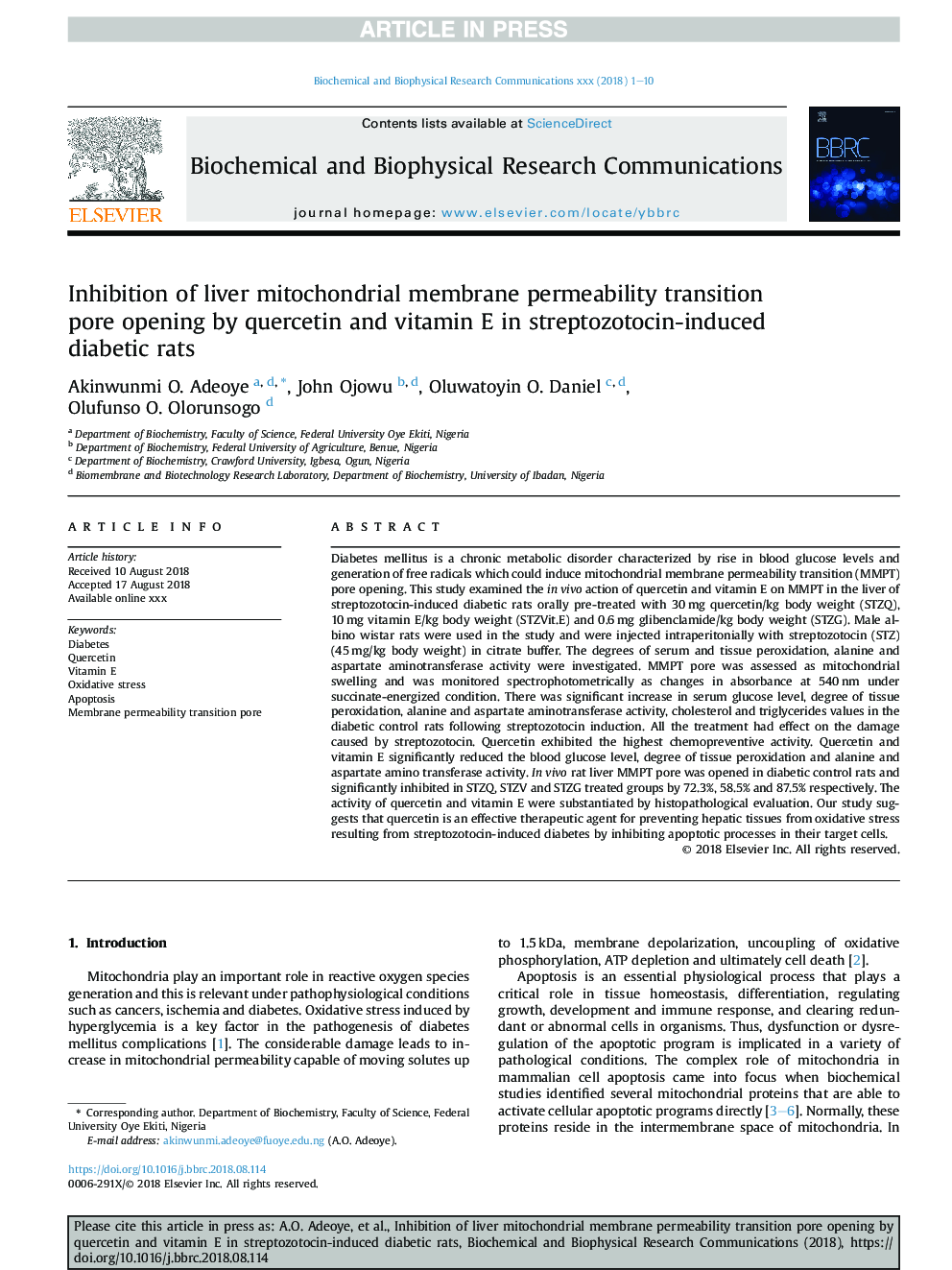| کد مقاله | کد نشریه | سال انتشار | مقاله انگلیسی | نسخه تمام متن |
|---|---|---|---|---|
| 10156684 | 1666418 | 2018 | 10 صفحه PDF | دانلود رایگان |
عنوان انگلیسی مقاله ISI
Inhibition of liver mitochondrial membrane permeability transition pore opening by quercetin and vitamin E in streptozotocin-induced diabetic rats
دانلود مقاله + سفارش ترجمه
دانلود مقاله ISI انگلیسی
رایگان برای ایرانیان
کلمات کلیدی
موضوعات مرتبط
علوم زیستی و بیوفناوری
بیوشیمی، ژنتیک و زیست شناسی مولکولی
زیست شیمی
پیش نمایش صفحه اول مقاله

چکیده انگلیسی
Diabetes mellitus is a chronic metabolic disorder characterized by rise in blood glucose levels and generation of free radicals which could induce mitochondrial membrane permeability transition (MMPT) pore opening. This study examined the in vivo action of quercetin and vitamin E on MMPT in the liver of streptozotocin-induced diabetic rats orally pre-treated with 30â¯mg quercetin/kg body weight (STZQ), 10â¯mg vitamin E/kg body weight (STZVit.E) and 0.6â¯mg glibenclamide/kg body weight (STZG). Male albino wistar rats were used in the study and were injected intraperitonially with streptozotocin (STZ) (45â¯mg/kg body weight) in citrate buffer. The degrees of serum and tissue peroxidation, alanine and aspartate aminotransferase activity were investigated. MMPT pore was assessed as mitochondrial swelling and was monitored spectrophotometrically as changes in absorbance at 540â¯nm under succinate-energized condition. There was significant increase in serum glucose level, degree of tissue peroxidation, alanine and aspartate aminotransferase activity, cholesterol and triglycerides values in the diabetic control rats following streptozotocin induction. All the treatment had effect on the damage caused by streptozotocin. Quercetin exhibited the highest chemopreventive activity. Quercetin and vitamin E significantly reduced the blood glucose level, degree of tissue peroxidation and alanine and aspartate amino transferase activity. In vivo rat liver MMPT pore was opened in diabetic control rats and significantly inhibited in STZQ, STZV and STZG treated groups by 72.3%, 58.5% and 87.5% respectively. The activity of quercetin and vitamin E were substantiated by histopathological evaluation. Our study suggests that quercetin is an effective therapeutic agent for preventing hepatic tissues from oxidative stress resulting from streptozotocin-induced diabetes by inhibiting apoptotic processes in their target cells.
ناشر
Database: Elsevier - ScienceDirect (ساینس دایرکت)
Journal: Biochemical and Biophysical Research Communications - Volume 504, Issue 2, 2 October 2018, Pages 460-469
Journal: Biochemical and Biophysical Research Communications - Volume 504, Issue 2, 2 October 2018, Pages 460-469
نویسندگان
Akinwunmi O. Adeoye, John Ojowu, Oluwatoyin O. Daniel, Olufunso O. Olorunsogo,